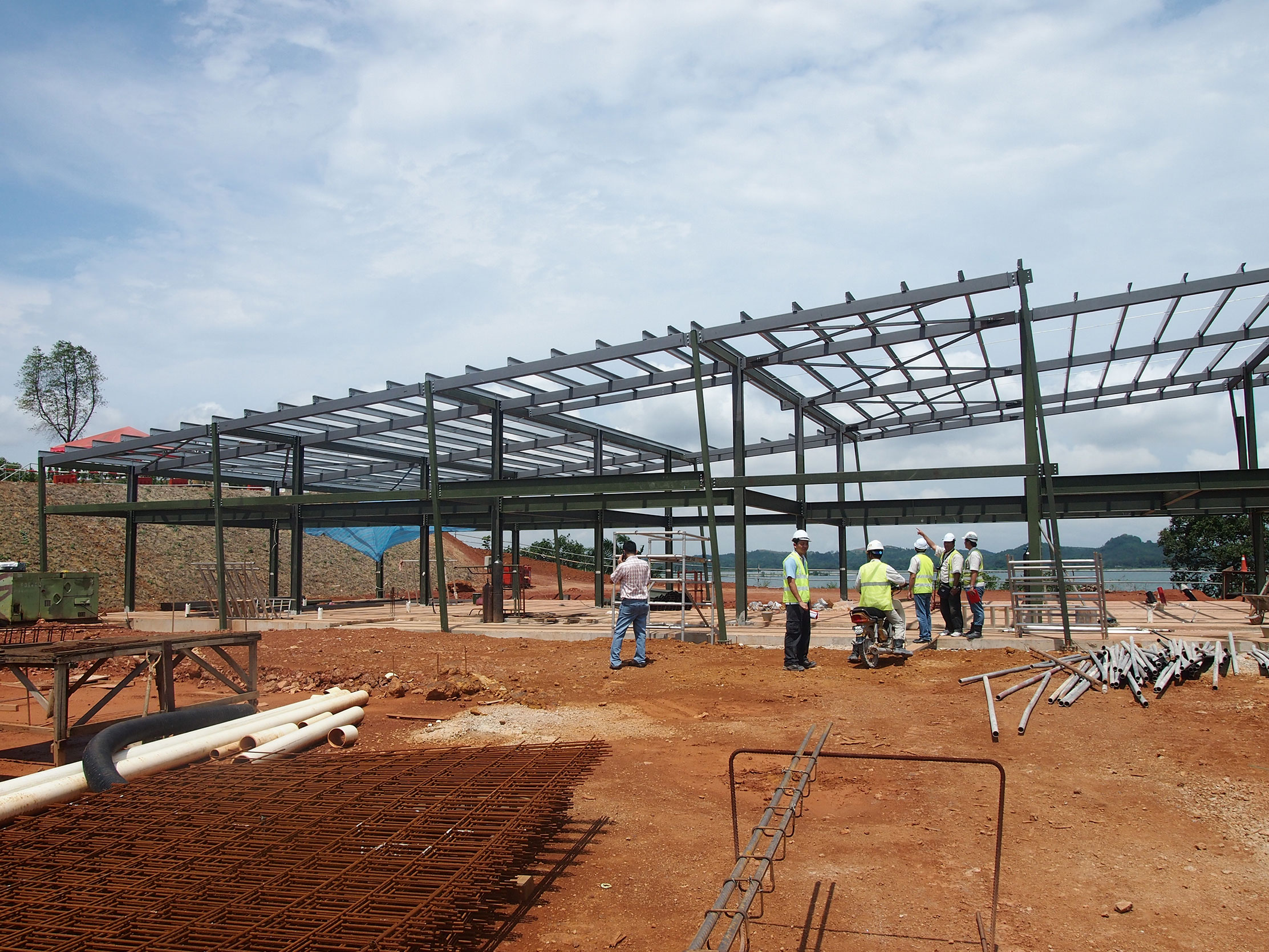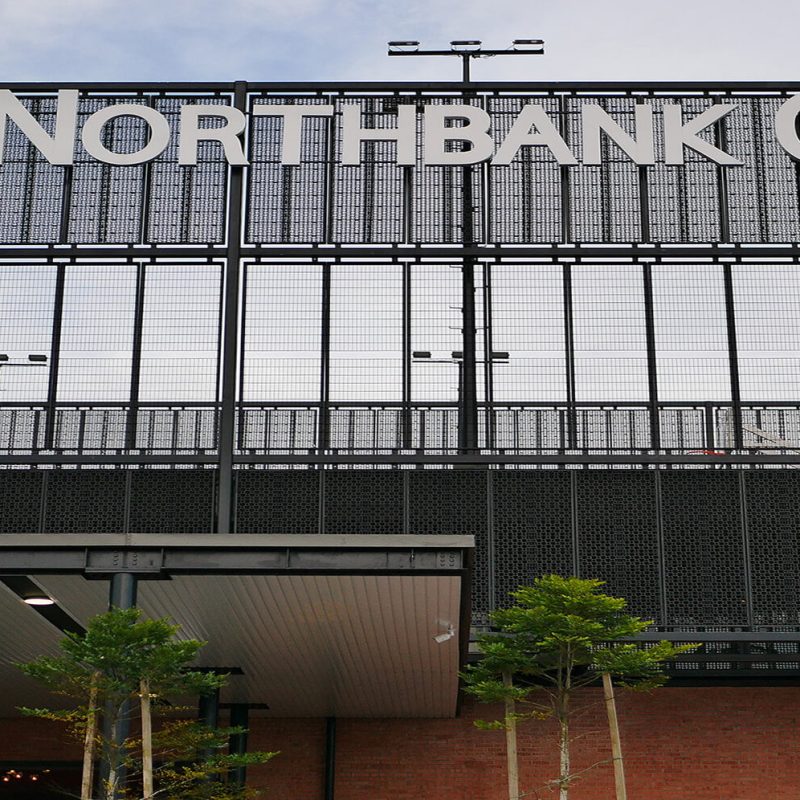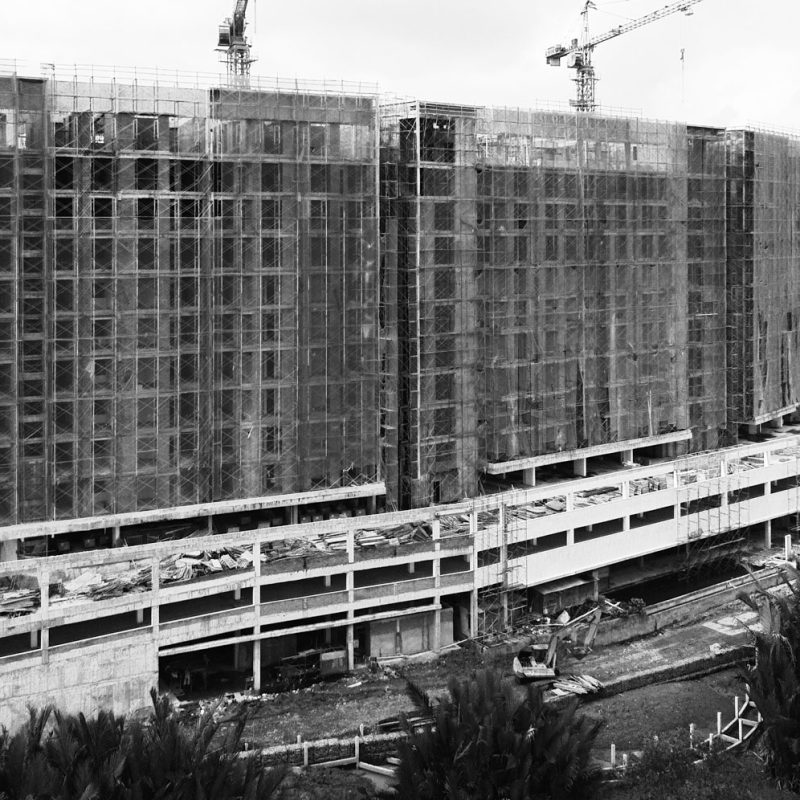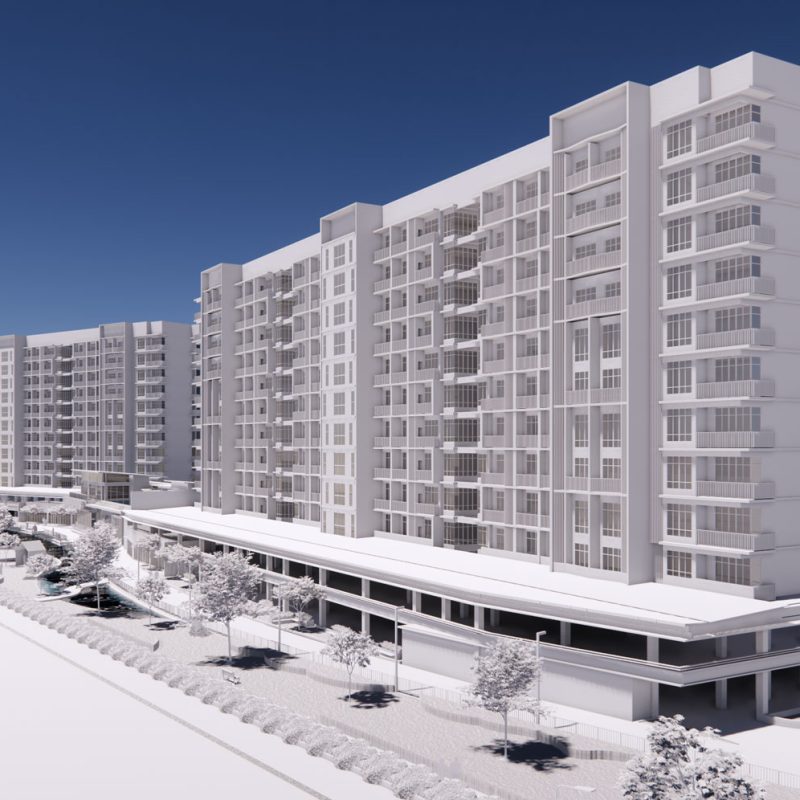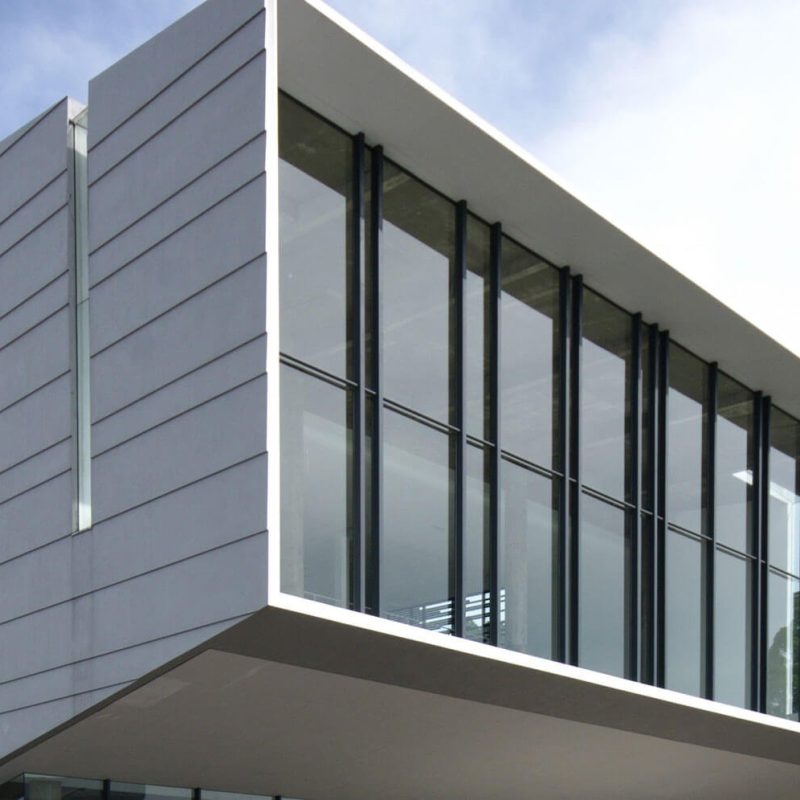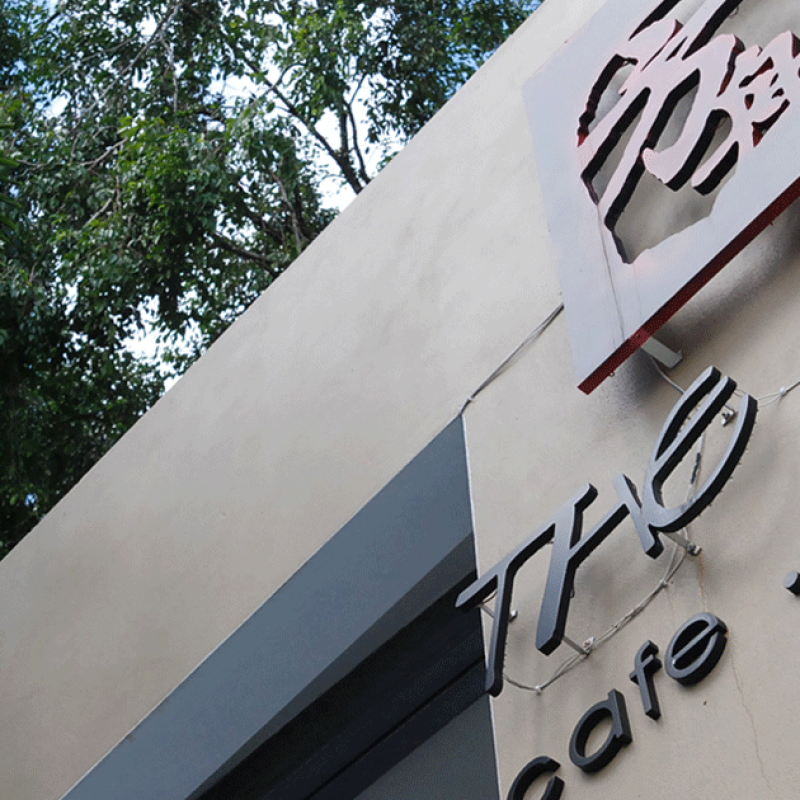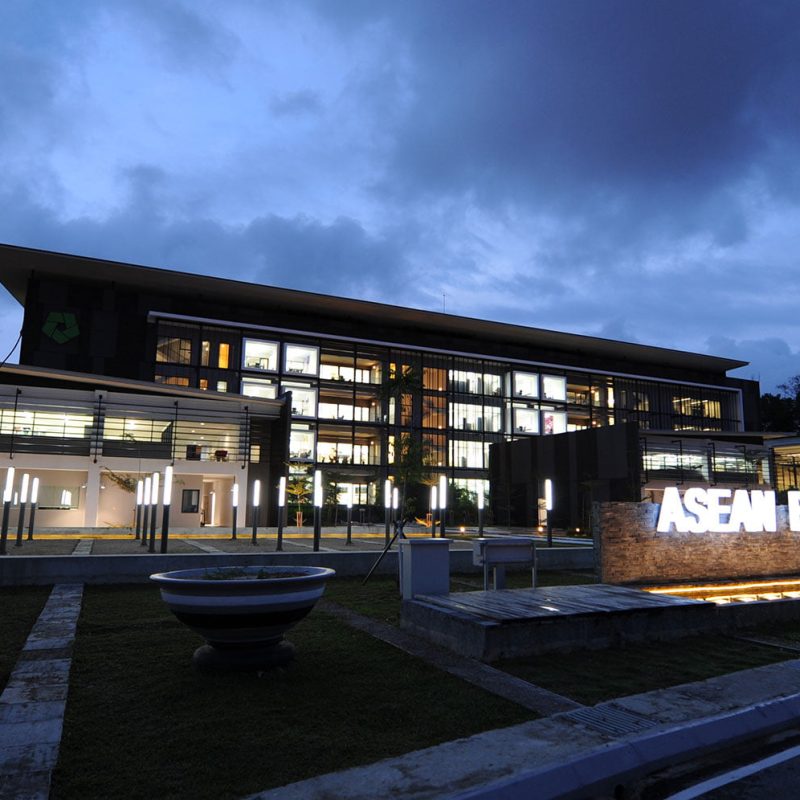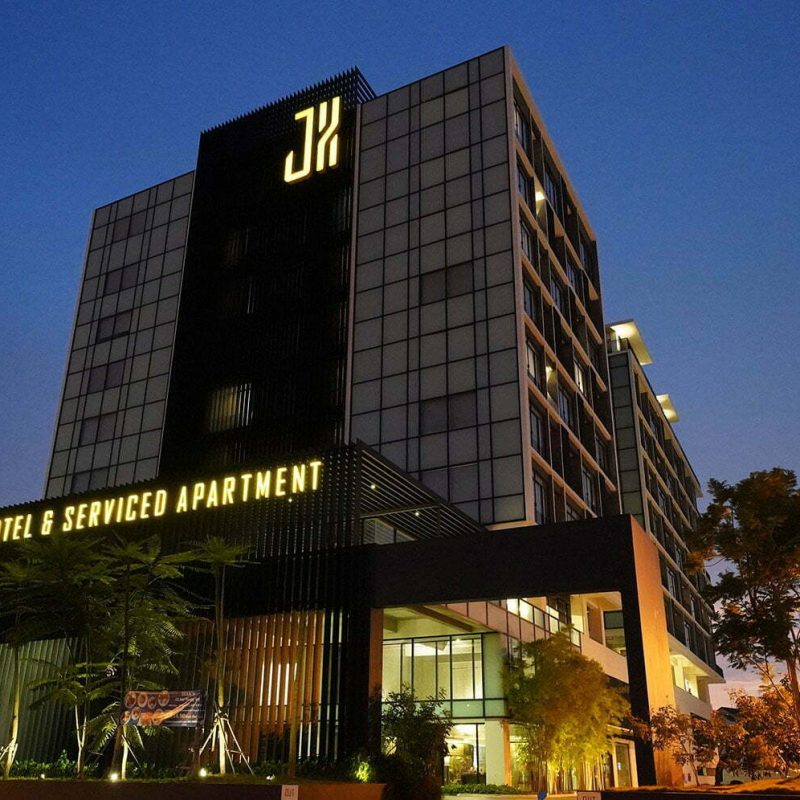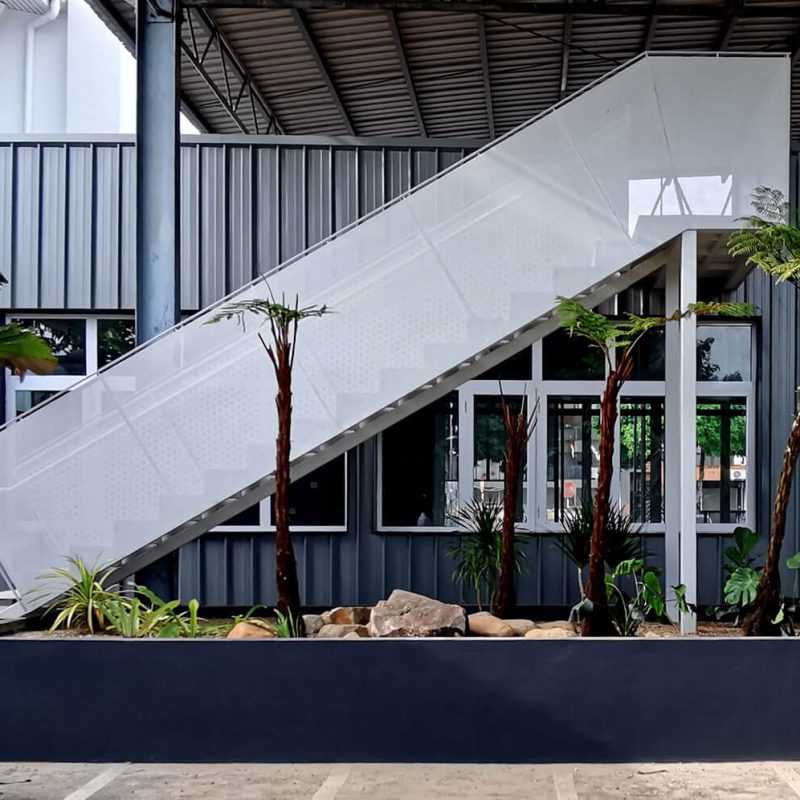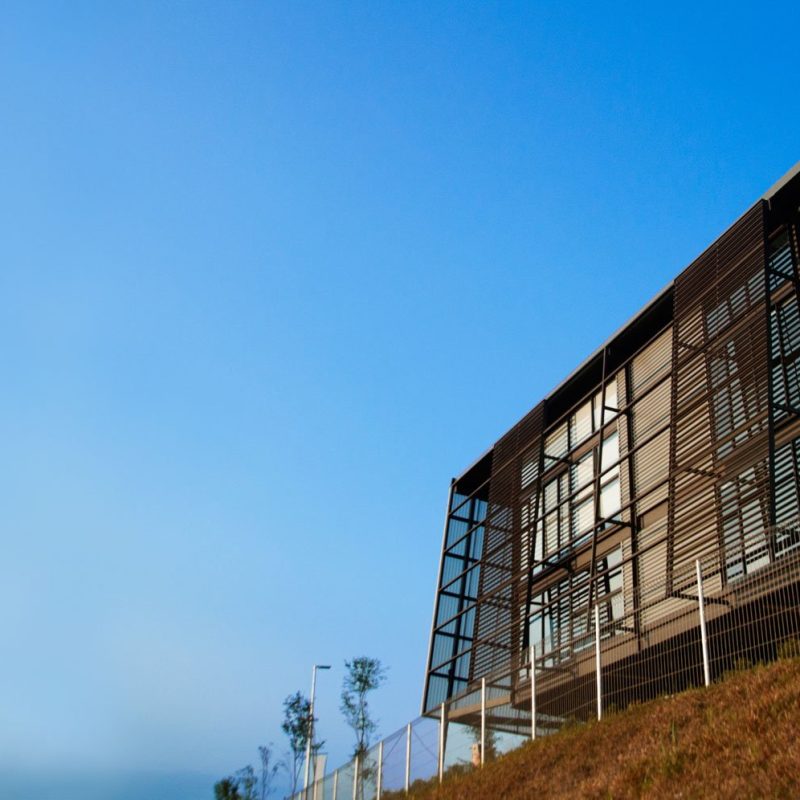Location
- Malaysia
City
- Johor Bahru | Johor
Duration
- 2013 – 2014
Client
- Sunway Construction Sdn Bhd
Surface
- Site area
- : 4 acres
- Building area
- : 1800 m2
- Building height
- : 9 m | 2 storeys with mezzanine
Status
- Completed
Project Type
- Commercial
Themes
- Low Rise | Office

This project is the site office for Sunway Group’s Southern Region in Johor, located on a high verge overlooking the Causeway with views of Singapore.
The initial brief called for an office building for 150 staff to be designed, constructed, and completed within six months. The client’s original intention was to house them in modified shipping containers as they wanted the option of reusing the office elsewhere. This method, however, lacked the company’s vision for ‘Building Synergistic and Sustainable Relationships’. We were then invited to provide a solution, which we approached from three standpoints:
- The building has to be modular to cater for the fast-track construction programme, allowing for some prefabrication and construction to take place off-site.
- It has to make use of appropriate building technologies so that large portions of it can be reconstructed elsewhere, in keeping with the client’s commitment to sustainable development.
- The building should benefit from passive design principles and respond to local climate and site conditions to maximise building users’ comfort and health while minimising energy use.

The following are some of the salient features of the Sunway Southern Region Office:
Modularity
The main frame of the building is designed using a 6 m x 6 m x 3 m module – a size that is chosen for the optimum spans for standard I-beam sizes and an efficient ceiling height of about 2.9 m. Additionally, we wanted to re-create the volume of shipping containers that are typically used to house site staff.
Optimising Location
The long elevation is orientated north-south which also aligns it along the Causeway. One of the client’s requests was that the boardroom must be at level +21.00 overlooking the Causeway and the estuary due west. This is about 6 m from the natural ground level, or three modules high. To optimise the potential of the building’s location and form, we designed a sky deck lookout for unobstructed views of the surrounding area.
Work and Communal Spaces
The layout plan is devised by dividing the required spaces into ‘served’ and ‘servant’ spaces. This then determines the type of finishes and M&E support required, to make full use of available budget resources.
The resultant building form is a long block that is 12 m wide and 60 m long, with a sloping roof that rises from the one-storey canteen at the lowest end to the three-storey boardroom at the highest end. The offices are located on two floors separated from the canteen by a courtyard – a feature that brings in natural light and landscape into the building. The toilets and amenities are placed in a two-storey block that is linked to the offices by a series of bridges over a ‘street’.
To modulate the boxy-ness of these stacked modules, a large over-sailing roof gives the building its final form. The roof turns down on the north elevation to shield the ‘street’ with a perforated screen. Rainwater from the roof is collected and stored above the toilet block and used for general and flushing of toilets.
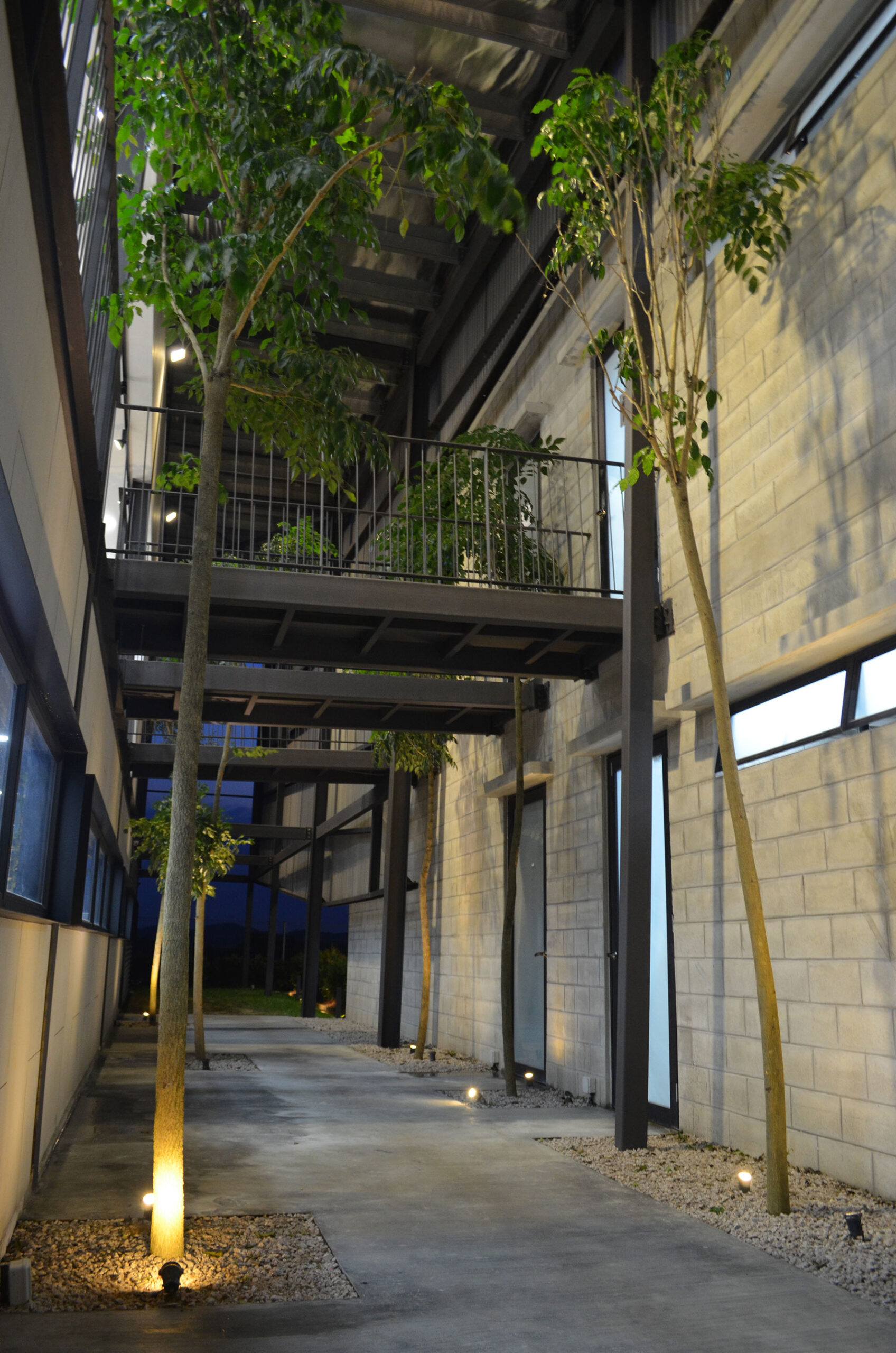
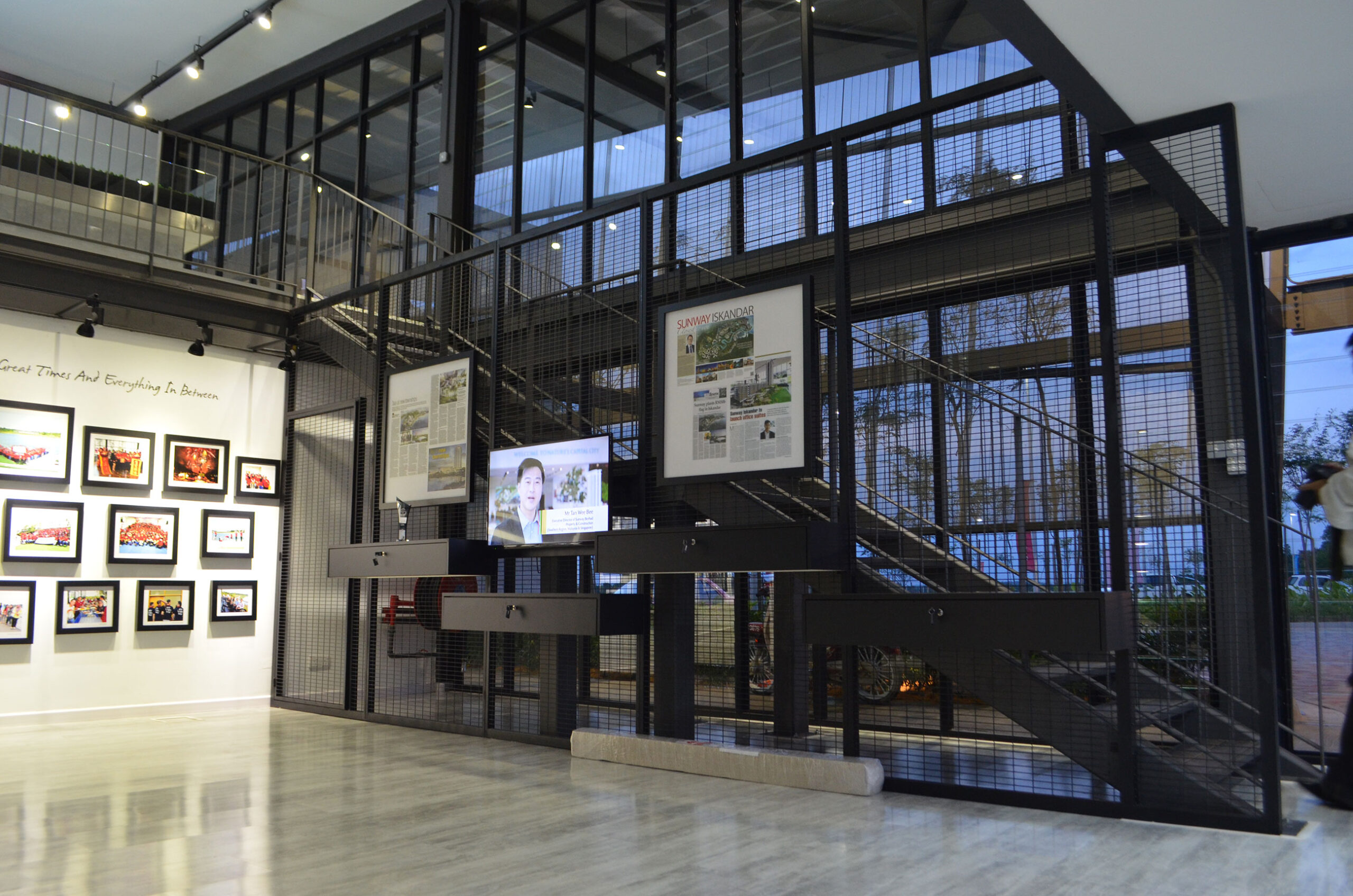
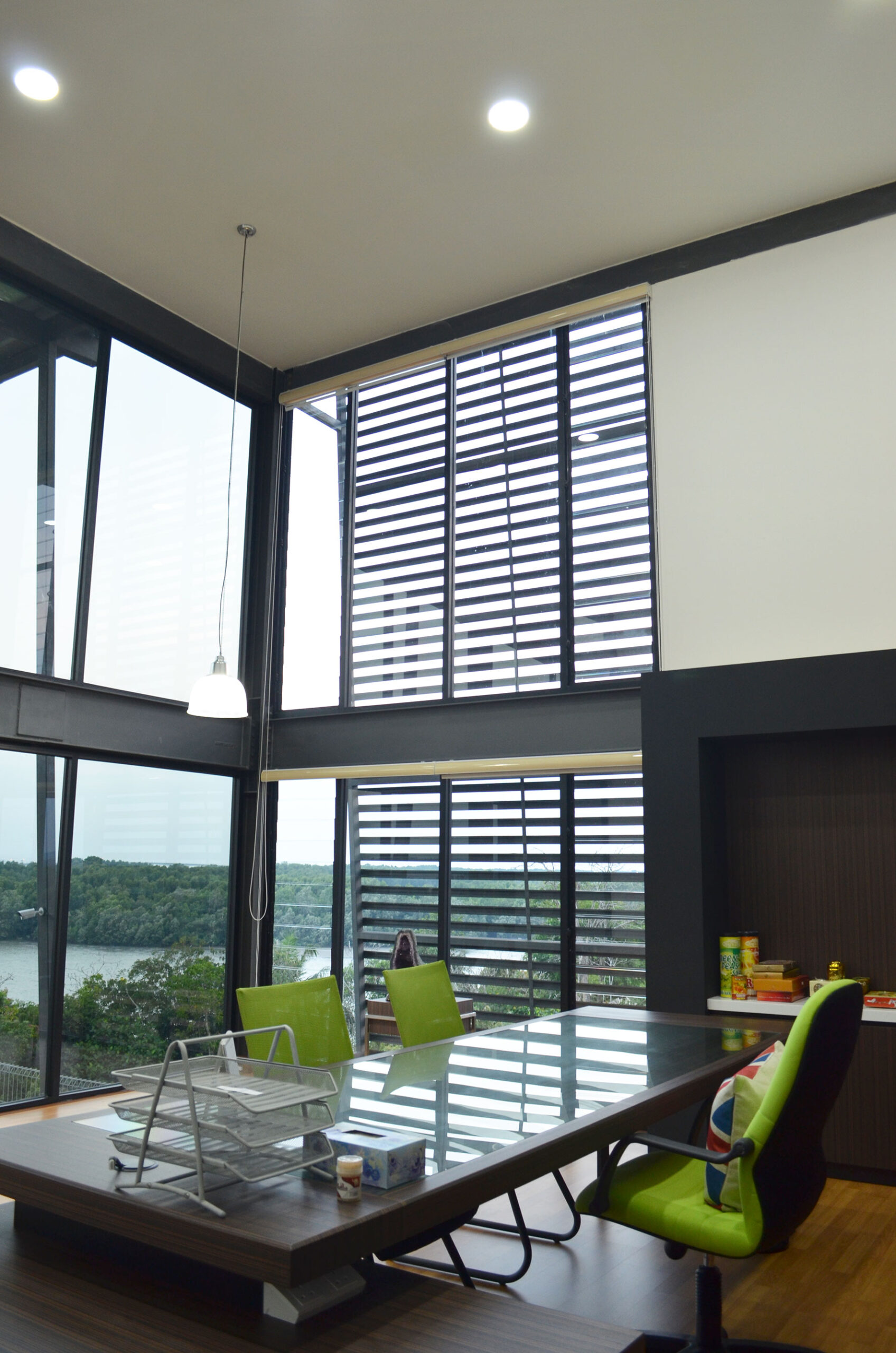
Appropriate Technology and Demountability
Panelised systems are chosen for their speed of installation and ease of reuse. Long-form corrugated roofing is used for external cladding, while plywood is used for the internal wall lining. The external walls are insulated to minimise sound and heat transfer into the building. The floor between the two levels of offices is built from two layers of marine-ply with batt insulation. In both instances, plywood is chosen because its structural integrity and relative lightness, and is screw-fixed so that they can be easily removed.
Passive Design
The overriding passive design principle influenced many of our design decisions, such as:
- North-south orientation of the building
- Demountable structure, walls, and floor systems
- ‘Thin’ floor plan to optimise natural lighting in the work space
- Natural ventilated service and circulation areas
- Insulated walls and roof
- Operable windows in the work space
- Collection and reuse of rainwater
- Sun shading on western façade
- Plants to minimise surface water run-off and provide shade
- Semi-permeable driveway and car parking surfaces, etc.
These features contribute to the final outlook and performance of the building, and continue to contribute positively in the operation and the maintenance of the Sunway Southern Region Office.
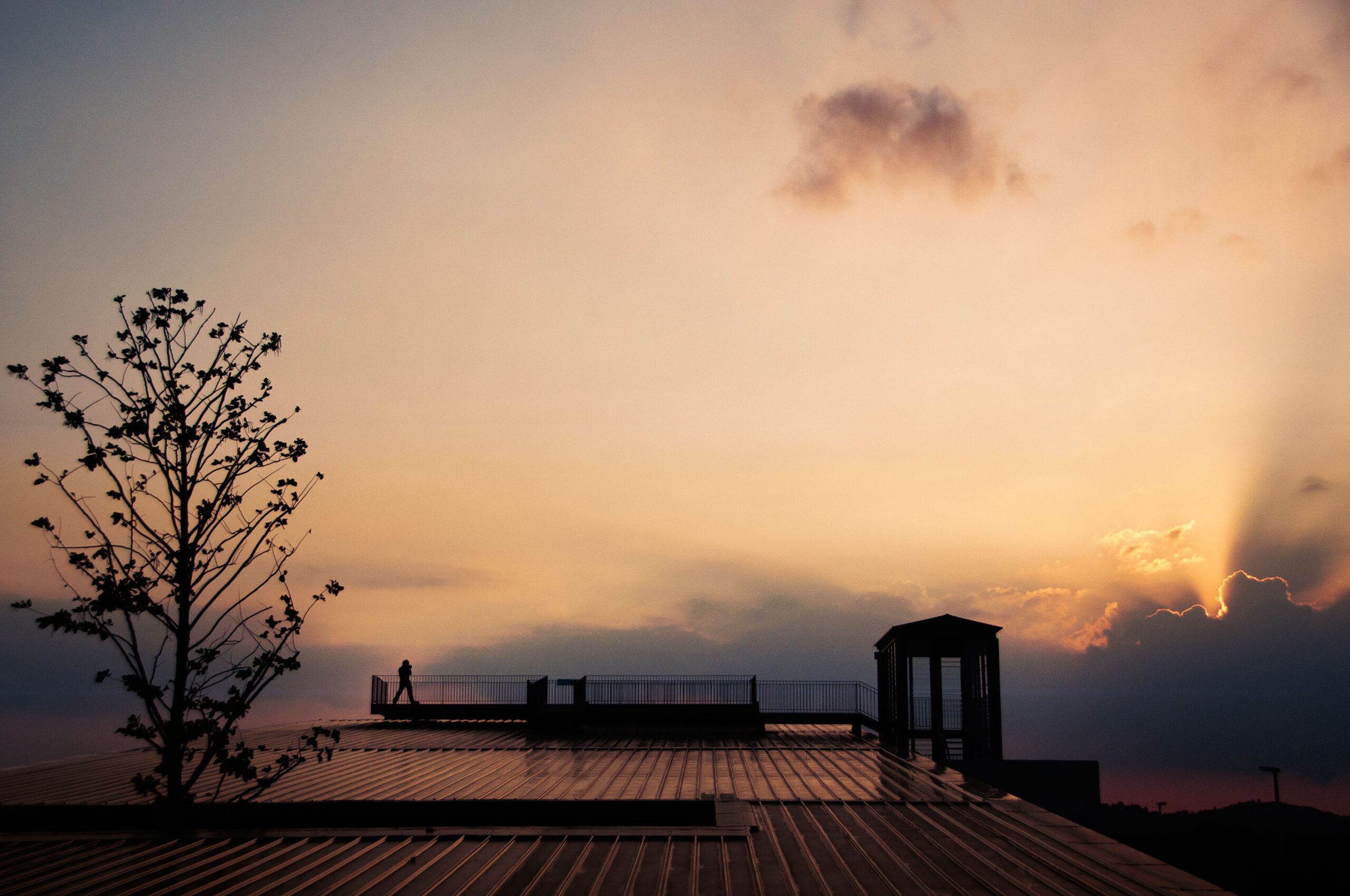
Team Credits
Architect
- Design Network Architects Sdn Bhd
Engineer
- C & S : AYL Consulting Engineers
- M & E : Sunway Construction Sdn Bhd
Contractor
- Sunway Construction Sdn Bhd
Design Team
- Wee Hii Min
- Leong Gian Wen
- Michael Voon
- Lim Siew Yong
- Jenny Chow
Photography
- Lo Horng Rong
- Jenny Chow
Publications
Share our project
